Ancient Americas
Pre-Columbian, Mesoamerican cultures date to the period in the Americas before the arrival of Columbus. Shared characteristics demonstrate the strong cultural bond of these civilizations, such as pyramid building, maize as an agricultural staple, deities dedicated to natural forces (i.e. rain, storm, fire) and a ritual ballgame. These advanced civilizations of early Central and South America developed accurate and complex calendar systems, sophisticated systems of writing and an advanced understanding of astronomy. As in all cultures, they also sang, danced, and played on a variety of flutes, whistles, trumpets, rattles and drums, expressing their emotions and cultural practices. Today, we find many of their descendants are still living in their ancestral homes and playing reproductions of these remarkable, ancient instruments. Many of the ancient American artifacts in this exhibit were found in burial sites, leading us to believe that they were used during funerary rituals.
The majority of these Mesoamerican instruments are structured in anthropomorphic or zoomorphic shapes. Anthropomorphic is described as having a human form or human attributes that may be ascribed to nonhuman things. While, zoomorphic is depicted as having the form of an animal and attributes of animal characteristics.
Please note: To find further descriptions on these instruments please go to the top of any page and ‘select’ their respective cultural GALLERY.
Vessel Flutes
Vessel flutes are a type of flute with more of a spherical hollow body, rather than a straight tube-shaped body. The far end of the vessel is also closed. There are several types of whistles and vessel flutes made of clay, found in the Mesoamerican cultures including ocarinas and water flutes.
Ocarinas - Whistles - Flutes
The ocarina is a wind instrument (aerophone) with enclosed space, finger holes and often a projected fipple-type mouthpiece. A fipple mouthpiece is an opening with a channel/duct that directs the air to pass through to a sharp edge that splits the air into and outside the instrument, like a recorder. Other ocarinas may rely on the player’s lips to direct the air against the edge, like a transverse or end-blown flute, which are called edge-blown flutes. According to legend, Hernán Cortes brought a group of Aztec dancers and musicians to Charles V, Ruler of both the Holy Roman Empire and the Spanish Empire, to perform at the royal court, and it was here the idea of the ocarina evolved in Western Europe.
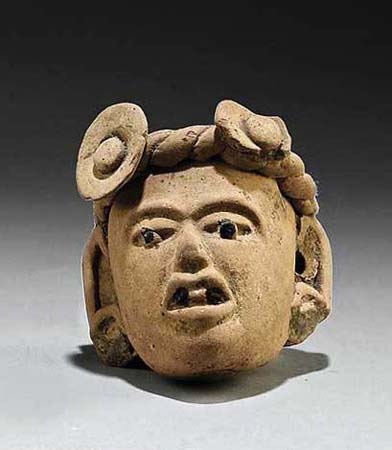
‘Head Whistle’
Veracruz Culture
Mexico
Pottery, tar
ca. 600-900 CE
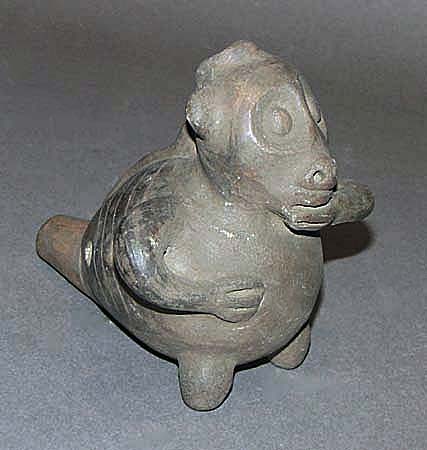
‘Monkey Ocarina’
Veracruz Culture
Mexico
Terracotta
ca. 600-800 CE
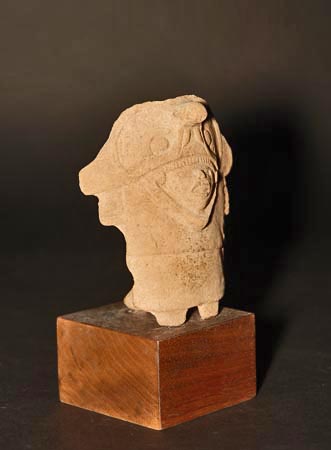
‘Priest Mask Whistle’
Veracruz Culture
Mexico
Unburnished clay
ca. 600-900 CE

‘Supernatural Deity Whistle’
Veracruz Culture
Mexico
Pottery
ca. 600-900 CE
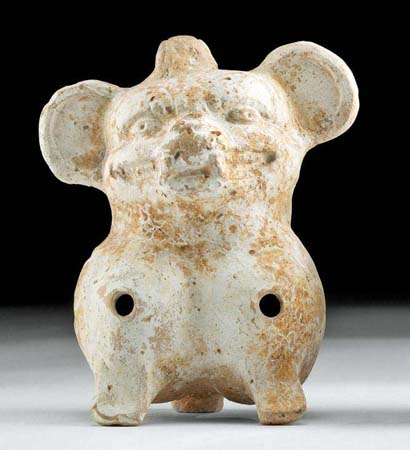
‘Jaguar Ocarina’
Veracruz Culture
Mexico
Pottery
ca. 200-600 CE
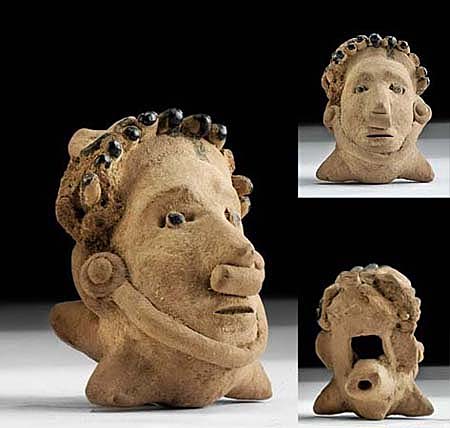
‘Anthropomorphic Whistle’
Veracruz Culture
Mexico
Pottery, tar
200 to 600 CE

‘Avian (Bird) Whistle’
Chupicuaro Society
Guanajuato Valley, West Mexico
Pottery
ca. 300 – 100 BCE
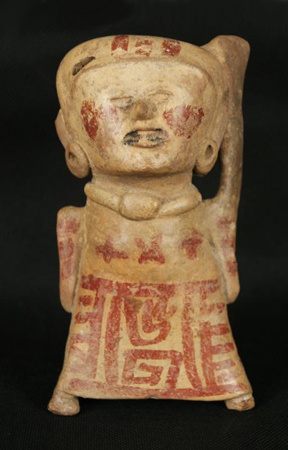
‘Sonriente (Smiling Face) Whistle’
Remojadas Culture
Veracruz, Mexico
Terracotta, pigment
ca. 600-800 CE

‘Polychrome Ocarina’
Nayarit Culture
Mexico
Polychrome, terracotta
ca. 250 BCE to 250 CE
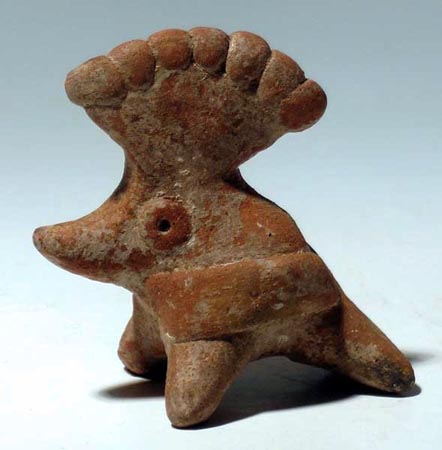
‘Bird’ Whistle’
Colima Culture
West Coast, Mexico
Terracotta
ca. 300 BCE-300 CE
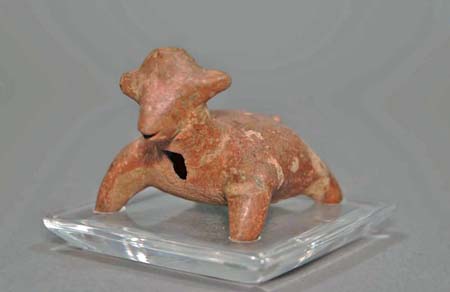
‘Dog Ocarina’
Colima Culture
West Coast, Mexico
Terracotta
ca. 200 BCE-200 CE
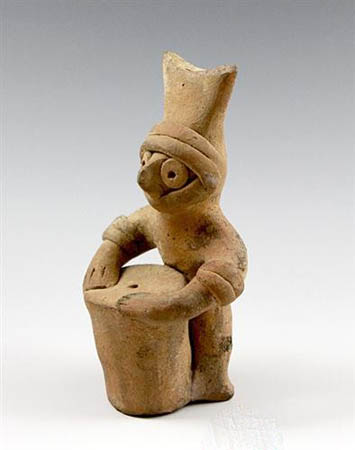
‘Drummer Figure Whistle’
Colima Culture
West Coast, Mexico
Terracotta
ca. 200 BCE-200 CE
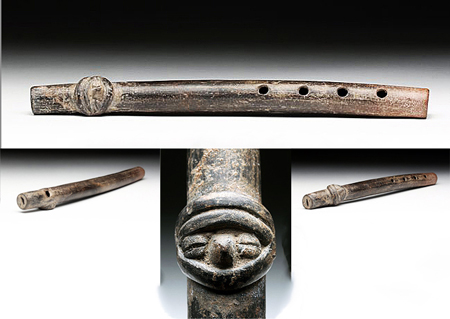
‘Warrior Flute’
Colima (Otomies)
West Coast, Mexico
Black ware pottery
ca. 300 BCE to 300 CE
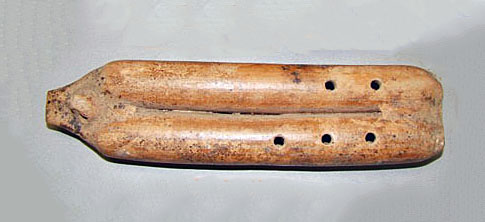
‘Double Chamber Whistle-Flute’
Colima Culture
West Coast, Mexico
Terracotta
ca. 250 BCE-250 CE

‘Edge-blown Flute’
Colima Culture
West Coast, Mexico
Red pottery
ca. 100 CE to 300 CE
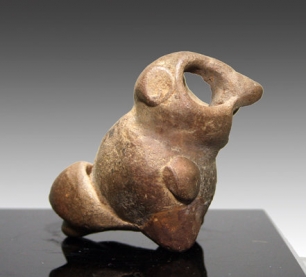
‘Owl-shaped Whistle’
Maya Culture
Guatemala or Mexico
Ceramic
c. 550- 800 CE

‘Effigy Whistle’
Maya Culture
Jaina Island, Mexico
Ceramic
ca. 600 CE-900 CE
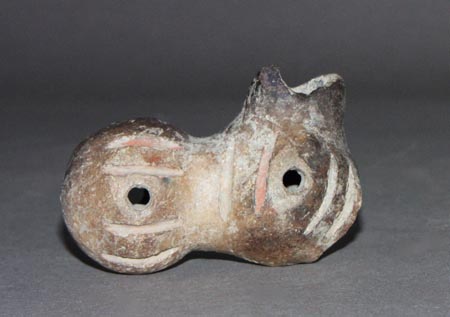
‘Bird Edge-blown Ocarina’
Maya Culture
Northwestern part of the isthmus of Central America
Ceramic
ca. 200 CE-900 CE
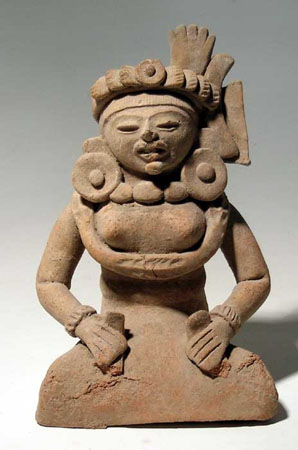
‘Female Whistle’
Maya Culture
Northwestern part of the isthmus of Central America
Ceramic
ca. 400 CE-800 CE
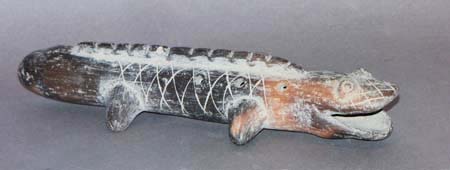
‘Alligator Ocarina’
Maya (possibly)
Northwestern part of the isthmus of Central America
Ceramic
ca. 200 CE-900 CE
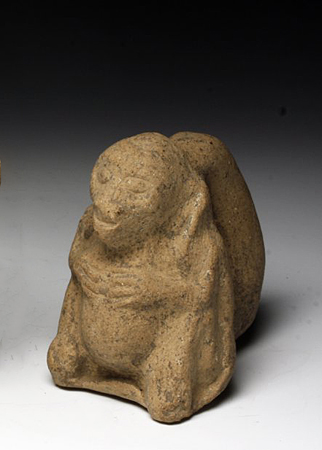
‘Monkey Whistle’
Maya Culture
Northwestern part of the isthmus of Central America
Ceramic
ca. 500 CE-800 CE

‘Frog/Fish Whistle’
Maya Culture
Northwestern part of the isthmus of Central America
Ceramic
ca. 400 CE-800 CE
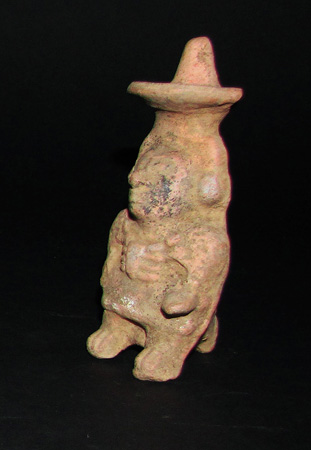
‘Male Effigy Whistle’
Maya Culture
Northwestern part of the isthmus of Central America
Ceramic
ca. 400 CE-800 CE
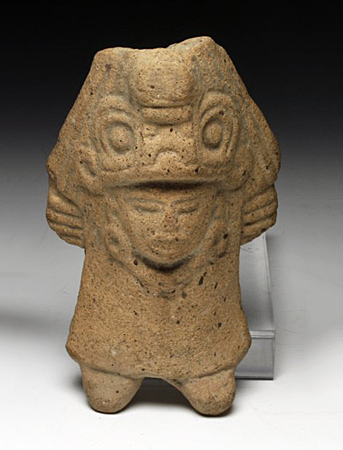
‘Lord Whistle’ (in full regalia)
Maya Culture
Northwestern part of the isthmus of Central America
Ceramic
ca. 500 CE-800 CE

‘Figural Head Whistle’
Maya Culture
Northwestern part of the isthmus of Central America
Ceramic
ca. 250 CE-900 CE

‘Face Mask Whistle’
Maya Culture
Northwestern part of the isthmus of Central America
Ceramic. pigment
ca. 400 CE-800 CE
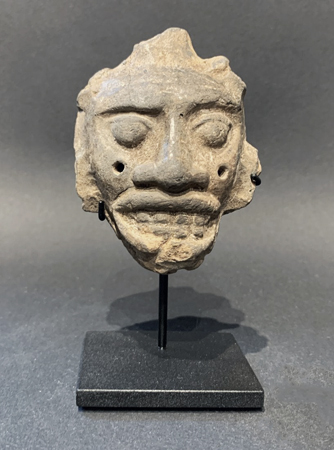
‘Death Mask Whistle’
Maya Culture
Northwestern part of the isthmus of Central America
Ceramic
ca. 400 CE-800 CE

‘Two-hole Flute’
Guanacaste-Nicoya
Costa Rica
Ceramic, pigment
ca. 500-1000 CE
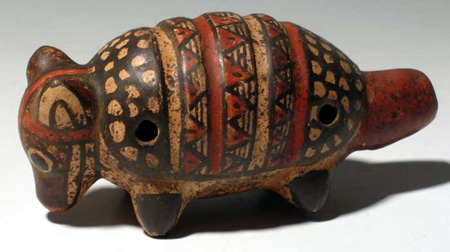
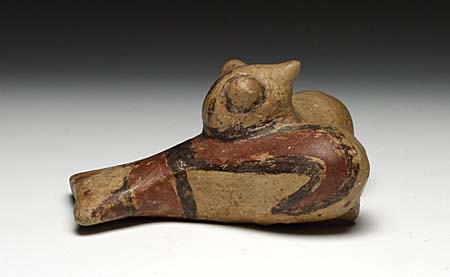
‘Armadillo Ocarina’
Guanacaste-Nicoya
Costa Rica
Ceramic, pigment
ca. 800-1250 CE
‘Avian (Bird) Ocarina’
Guanacaste-Nicoya
Costa Rica
Ceramic, pigment
ca. 800-1200 CE

‘Figure Whistle’
Guanacaste-Nicoya
Costa Rica
Ceramic, pigment
500 – 800 C.E.
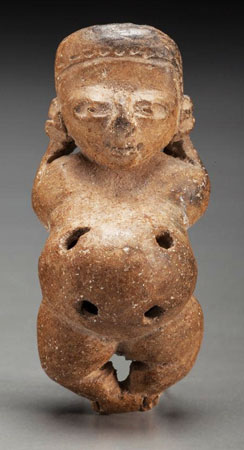
‘Anthropomorphic Fertility Ocarina’
Olmec People
Guatemala, Pacific Lowlands
Pottery
ca. 400 BCE-200 CE
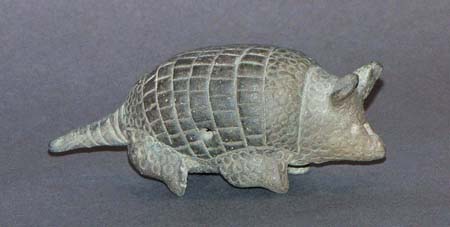
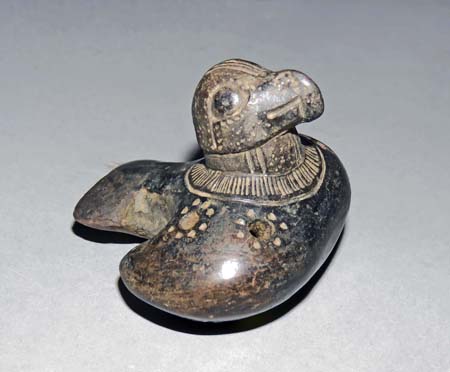
Armadillo Ocarina’
Puerto Hormiga Culture
Cartagena, Columbia
Black ware Pottery
Pre-Columbian, undetermined
‘Avian (Bird) Ocarina’
Tairona (Tayrona) culture
Columbia
Black ware Pottery
ca. 800-1200 CE‘
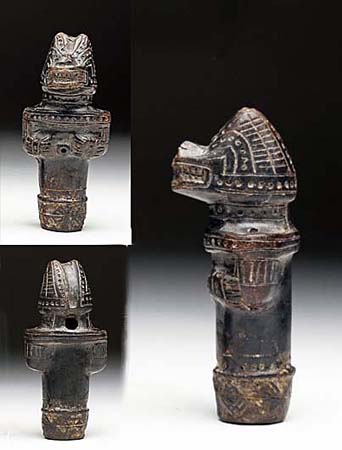
‘Jaguar Whistle’
Tairona (Tayrona) culture
Columbia
Black ware Pottery
ca. 1000 CE
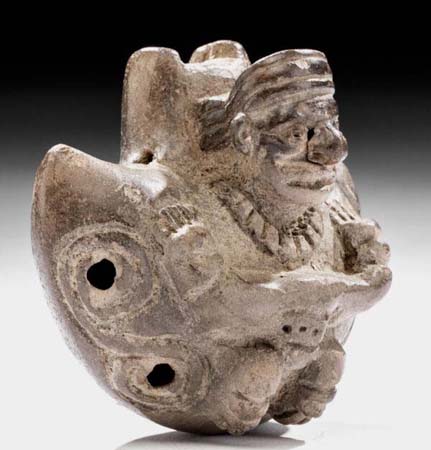
‘Half-Moon Figure Form Flute’
Tairona (Tayrona) culture
Columbia
Brown ware Pottery
ca. 1000-1500 CE

‘Anthropomorphic Figure on Tubular Duct Flute’
Collected in Mexico by Dr. Lewis B. Hilton, Professor Emeritus, Washington University
Pottery, pigment
Pre-Columbian, undetermined date
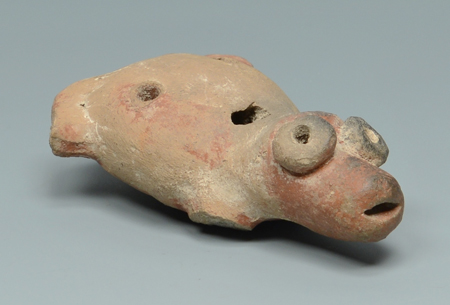
‘Zoomorphic Figure Ocarina’
Collected in Mexico by Dr. Lewis B. Hilton, Professor Emeritus, Washington University
Pottery, pigment
Pre-Columbian, undetermined date
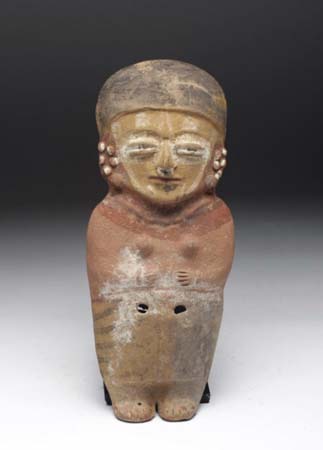
‘Whistling Vessel’
Bahia Culture
Coast of Manabí, Ecuador
Ceramic, pigment
ca. 200 BCE – 600 CE
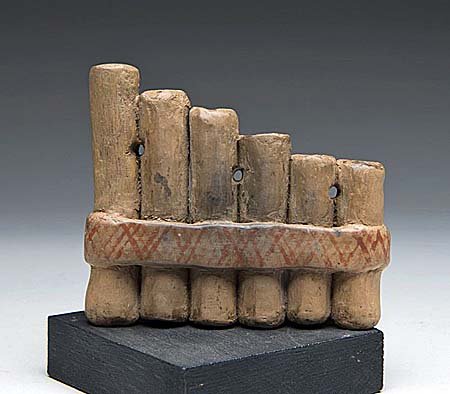
‘Panpipes’
Inca Culture
Peru
Pottery, pigment
ca. 1500 CE
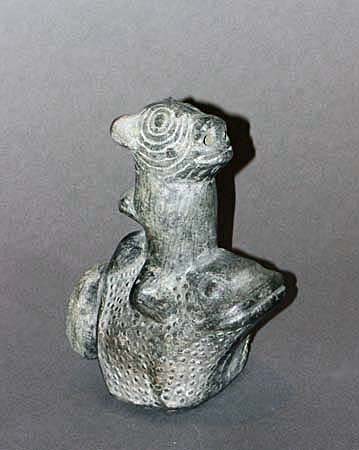
‘Jaguar (two-creatures) Whistle’
Chimu Culture
Central Coast Peru
Black ware Pottery
ca. 1100 – 1470 CE
Water Flutes
To produce music or sound with a water flute, it utilizes the principle that fluid/water that is in the back chamber is tilted to move the fluid/water to the front chamber, displacing the air in the front chamber which is then forced to move up and across the sounding edge of the open hole (mouth) at the top of the front chamber. These water flutes, were often made to serve as mourning flutes.

‘Whistling Bridge-Spout Vessel’
Vicus Culture
Piura Region of North Coast Peru
Terracotta
ca. 400 – 100 BCE
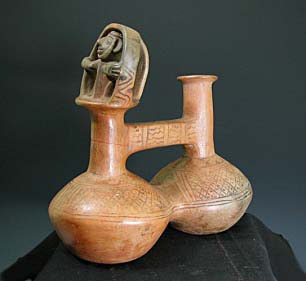
‘Lord Figure – Whistling Bridge-Spout Vessel’
Inca Culture
Peru
Terracotta
ca. 1400-1500 CE
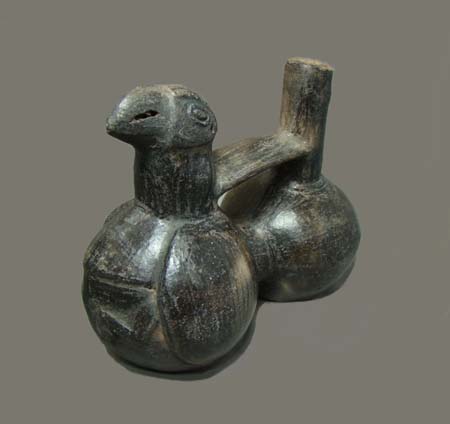
‘Huacco Silbadora’ (Whistling Artifact)
Chimu Culture
Central Coast Peru
Black ware Pottery
ca. 1200-1500 CE
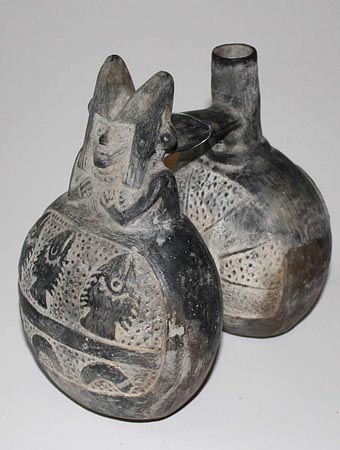
‘Lord Naymlap’ Whistling Vessel
Sican-Lambayeque Culture
North Coast of Peru
Black ware Pottery
ca. 700-1350 CE
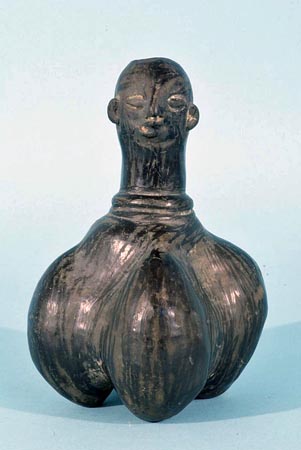
‘Botella Silbadora’ (Whistling Tri-Lobed Bottle)
Chimu Culture
Central Coast Peru
Black ware Pottery
ca. 1200-1450 CE
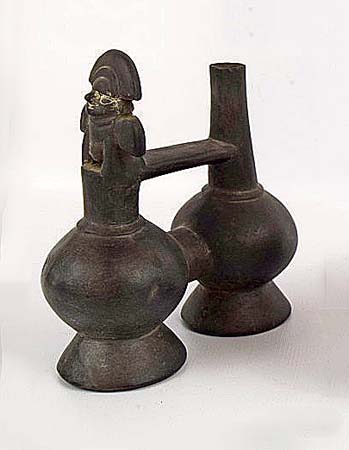
‘Whistling Double Chamber Vessel’
Salinar Culture (possibly)
North coast of Peru
Terracotta
Pre-Columbian undetermined
Horns/Trumpets
Horns/trumpets during Mesoamerica were predominantly made from metal, sea shells, animal bones and horns. Very few mud/clay horns have survived due to their extended sculptured tube shape as a horn and the fragile texture of clay. To play these instruments one must buzz their lips into an aperture hole at one end.
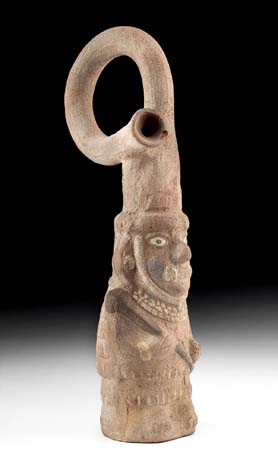
‘Figure Trumpet’
Moche Culture
Peru
Pottery, pigment
ca. 400 to 700 CE
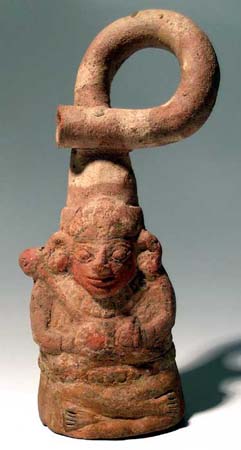
‘Figure Trumpet’ (smaller)
Moche
Peru
Pottery
200 BCE–600 CE
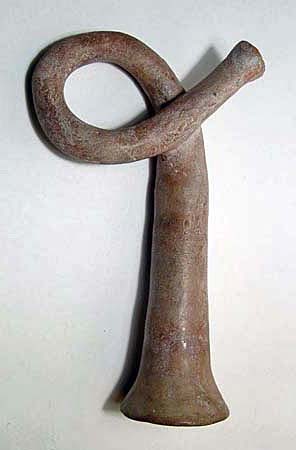
‘Trumpet’
Moche
Peru
Pottery
200 BCE–600 CE
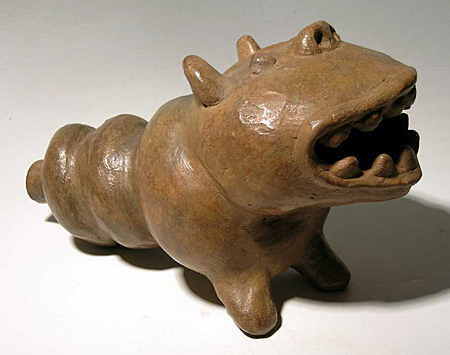
‘Jaguar Trumpet’
Toltec
Mexico
Pottery
ca. 900-1200 CE
Rattles & Drums
Pottery rattles and drums may be made in numerous shapes and sizes, including figures that are anthropomorphic (human) and zoomorphic (animal). They were filled possibly with seeds or small clay balls. Although these pottery instruments survived from pre-Conquest Central and South America and we are able to validate excavated locations and possible cultures, little is known today about their usage.

‘Olmecoid Rattle Figure’
Olmec Culture
Ancient Chalchuapa, El Salvador
Pottery
ca. 1000 – 600 BCE
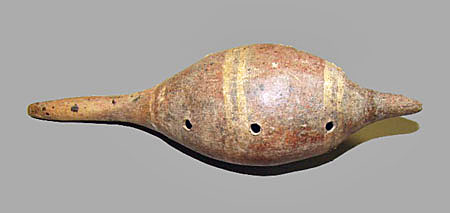
‘Rattle w/Strips’
Colima Culture
West Coast, Mexico
Terracotta. pigment
ca. 250 BCE – 250 CE
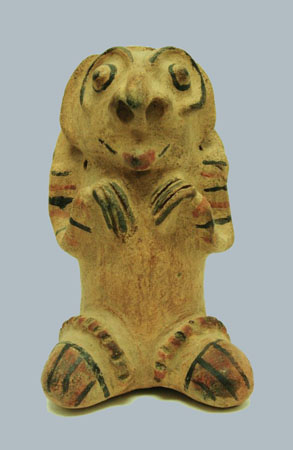
‘Ceremonial Deity Rattle w/Rasp on Back’
Pre-Columbian Culture
Nicaragua
Terracotta, pigment
ca. 550 CE
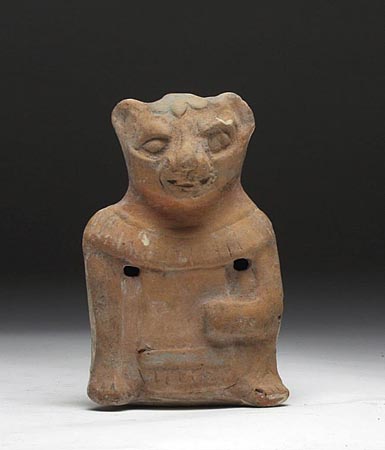
‘Jaguar Rattle’
Maya Culture
Jaina Island
Terracotta, pigment
ca. 600-900 CE

‘Zoomorphic Drum w/Rattle in Head’
Guanacaste-Nicoya
Costa Rica
Terracotta, polychrome
ca. 800-1200 CE
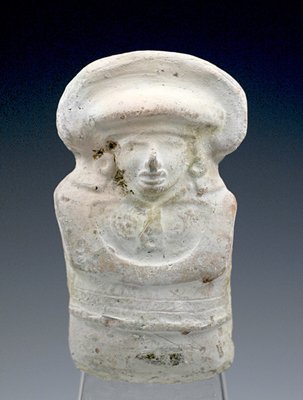
‘Standing Figure Rattle’
Nopiloa Culture
Mexico, Mesoamerica, Veracruz
Terracotta, pigment
ca. 600-900 CE
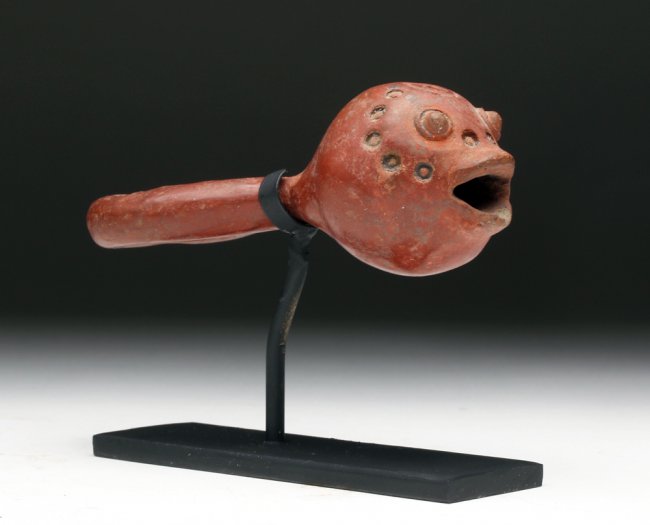
‘Serpent Rattle’
Colima Culture
West Coast, Mexico
Terracotta
ca. 300 BCE-300 CE
